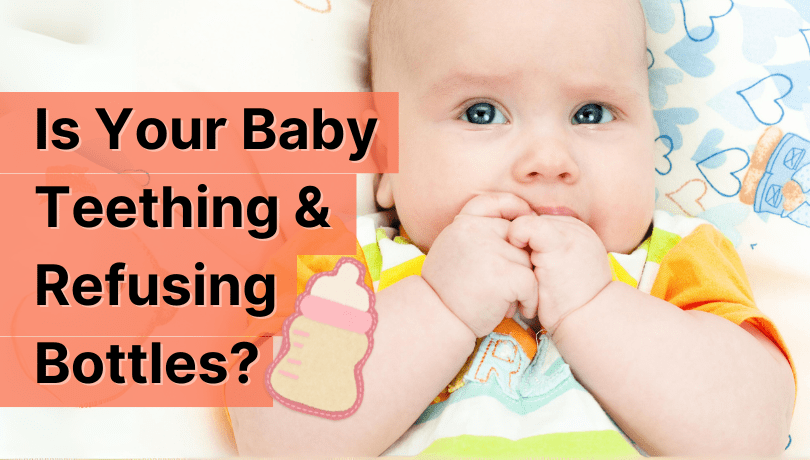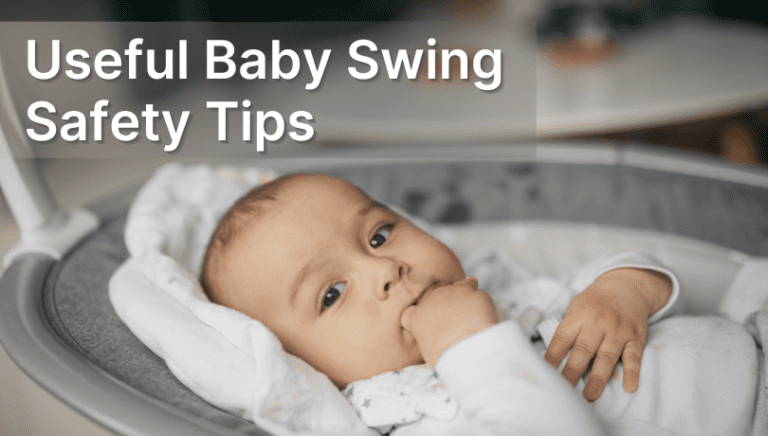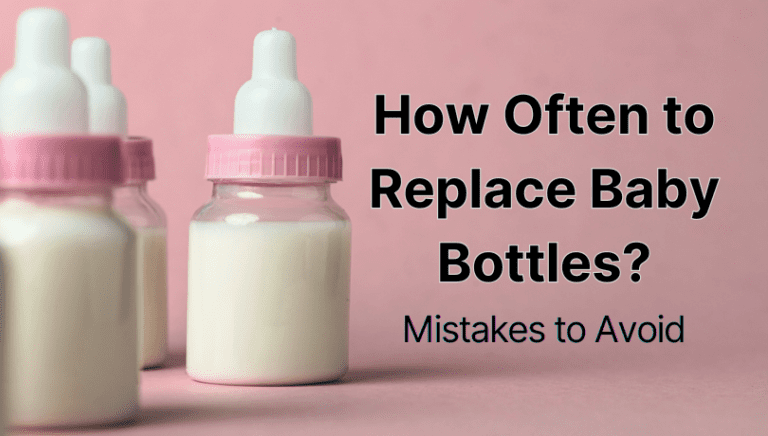Is Your Baby Teething and Refusing Bottles? Helpful Fixes!
When your baby is around 4 to 7 months old, they go through teething (a brand-new milestone!). And it can be challenging when the discomfort from teething makes them fussy.
Although not every baby is the same – a few babies don’t encounter any problems with their teething, while others face extreme discomfort. Sometimes, this extreme discomfort can cause them to refuse bottle feeding too. So, is your baby teething and refusing bottle-feeding, impacting their appetite?
Don’t worry, you’ve got good ways to deal with this. Let’s understand the basics of teething, how it affects your baby’s appetite, and tips and alternatives that’ll make things easier to handle.
Table of Contents

What is Teething?
This process is when your babies get their first teeth. It starts at about 4 months, but some babies take longer to go through this process (even up to 12 months). Here are some common symptoms you’ll be able to notice when your baby starts teething:
- Red and sore gums
- Issues with sleeping
- Frequent drooling
- Upset stomach (from dehydration)
- Rise in body temperature. Usually, the temperature is mild
Impact of Teething on Appetite
When my baby began his teething, I was concerned about his reduced appetite. He barely ate anything through the day and remained cranky most of the time because of the pain and swollen gums. But, know that this is natural.

- This is actually peak time for milk feeds, and they usually ask for milk more often now because chewing solids becomes uncomfortable.
- But the problem is when they start refusing the bottles as well. If you’ve been pumping milk to store in baby bottles, that can go to waste, making things worse.
My baby Theo had the same issue. The bottle nipple touching his tender gums proved quite painful and he began refusing the bottle. But don’t worry. There are simple ways to deal with this situation.
4 Tips to Deal With Baby Teething and Refusing Bottles
If you have been trying to bottle-feed your little one and he or she has been continuously refusing it, here are a few tips to help remedy the situation:
1. Bottle Nipple Freezing
- Try freezing the bottle’s nipple well before you start a feed. And during feeding, run the cold nipple through your baby’s gums.
- The cool nipple will soothe your baby’s pain and swollen gums, and chances are that your baby will start to feed again.
- It is also possible that your baby is uncomfortable with the bottle’s nipple. Maybe you haven’t gotten the right size. Understanding various baby bottle nipple sizes helps ensure the best fit.

2. More Peace and Quiet
- If you have a house full of hassles, noise, and other kids running around, bring your little one into a more calm environment.
- A quiet room can help your baby stop fussing and improve the chances of them accepting the bottle.
3. Position Switching
- When babies are teething, they are extra-fussy. So, I strongly recommend changing their feeding position from what you’ve been using before.
4. Spoon Feeding
- Sometimes, your baby will only fuss more when you try to bottle-feed over and over again. And no amount of calming down helps.
- In those instances, don’t force it. Just feed them milk with a spoon instead, and ease into bottle feeding with time.

Recommended Reading: How Many Baby Bottles Do I Need?
My old neighbor taught me the spoon-feeding trick, and it worked well for me. She was happy she found a suitable alternative and said –
“My baby has both a top and bottom tooth coming in. When he began refusing bottles, I fed him with a spoon, and he just stopped fussing. It was such a relief! Also, I keep trying to give him a bottle at least twice a day so he does not forget it… Things will get easier with time.”
Alternative Foods For a Teething Baby
It’s difficult to watch our babies struggle with the teething phase. It’s painful for them, and watching them in pain hurts us too.

But, we can try to make it easy for them and deal with it all patiently. You can also experiment with different foods and feeding methods at this stage:
- Teething Biscuits: Safe to chew, these biscuits are wonderful in reducing the pain from swollen gums. They are a great snack too – these dissolve easily in your baby’s mouth. Also, these biscuits can keep your baby full for some time.
- Soft Foods: Foods like soup, yogurt, puréed food, and scrambled eggs are great to keep them full. These are rich in nutrients and are easy to swallow.
- Cooling Foods: This is what I did for my Theo. Soothing foods like yogurt, cucumber sticks, fruit popsicles, etc. work as cooling teethers for babies. By consuming these cooling foods, babies can find relief from the pain, as the cooling sensation can numb their gums for a little while.
- Smoothies: Fruit smoothies are easy to make, super refreshing, and of course, babies are fond of them. Chilled smoothies can nourish them and provide them with some much-needed relief.
So, if your baby is squirming while bottle-feeding or refusing the bottle, do not worry at all. Be ready for the possibilities and adapt according to their needs. You can experiment with teething biscuits, chilled foods, and even teething toys!
Concluding Thoughts on Teething and Bottle-Feeding
As teething commences, we, as parents, are super excited about this growth phase. We are always ready to click pictures of their cute little tooth, but our babies are not always ready to smile and can be in pain.
They get fussy, irritated, push away the meal, and so on. This process will bring enormous changes that parents have to be prepared for. Teething is not always an easy process for a little one. So, if they have been refusing a bottle, you have to take it slow.
Show them the love and calm they deserve, and your babies will accept the bottle in due time. Also, be prepared, parents: sometimes a baby fond of eating solids might start rejecting milk. So, please go with the flow, look for alternatives, and keep experimenting.






